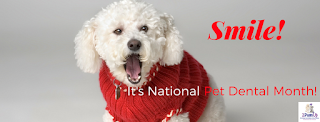Tips for Managing a Multi-Dog Household
If one dog is good, having two or more is even better, right?! While multiple dogs are great for companionship, entertainment and increased socialization – for both you and them – it can sometimes be a daunting task for all involved. Throw a child or two in the mix, along with a significant other, and it can be satisfying and stressful all at once. Don’t fret – dogs combined with effective management skills from their pet parents can equal a happy household!
The Leader of the Pack
While your canine companions’ temperaments and personalities do contribute greatly to household peace and harmony, so too does your guidance and leadership. Dogs are pack animals who look to their pack leader for instruction. As their pet parent, you are their pack leader. By demonstrating positive leadership, you can manage, supervise and set limitations for your dogs to keep your living environment from becoming a constant free-for-all filled with rowdiness and bad attitudes. Remember, you control the resources that can spark unwanted behaviors between dogs. Whether it be food, a toy or attention, you are the gatekeeper.
Positive Reinforcement and Correction
Reward your dogs with treats and praise to reinforce positive behavior. If one pooch displays unacceptable behavior, as the pack leader, you must put in the time to train him and establish behavioral expectations. Never punish your dog; rather, correct him. For example, if you suspect one dog is eating not only his own food, but the food of another, don’t punish him after the fact. Dogs do not have the same sense of logic that we as humans have. Punishing a dog for a past behavior will only confuse him and does not teach him anything useful. Instead, keep a close eye on him at feeding time and, if you see him snatching bites from another dog’s bowl, correct him immediately with a stern command to “leave it.” You may find it necessary to feed your dogs in separate rooms, or at separate times. Determine what works best for you and for your pups to avoid the negative behavior.
Playtime can also be a tense time as energy and excitement levels build. What starts out as a fun tumble between multiple pets can quickly escalate and turn ugly. In such instances, it’s your job as the pack leader to calmly step in and break up the interaction. Separate or crate each offender for a few minutes, to give them time to relax, and then let their playtime resume. Eventually, they will learn that roughhousing results in no more fun.
Maintaining a Peaceful Pack
The more dogs in your home, the more important it is that they are well-trained. Take the time to work with each of them to ensure pack unity and reduce stress; after all, aggression is caused by stress. Here are a few beneficial and effective training tips:
- Remain calm. Resist the impulse to scream or swat at your dogs in response to bad behavior. Doing so only adds tension to the situation.
- Leave it be. While it’s not advisable to let them work out differences on their own when it comes to major scuffles, it is effective to let them manage minor ones with no interference. Many minor skirmishes are a result of inherited pack behavior, and working through them can help restore pack unity.
- The reason is simple – tired dogs are well-behaved dogs.
- Individual attention. Spend some alone time with each dog to work on commands and to cultivate a respectful relationship.
- See your veterinarian. A health ailment can elevate pack tension. If you notice a behavioral or physical difference in one of your common offenders, a trip to the vet is advisable.




Comments
Post a Comment